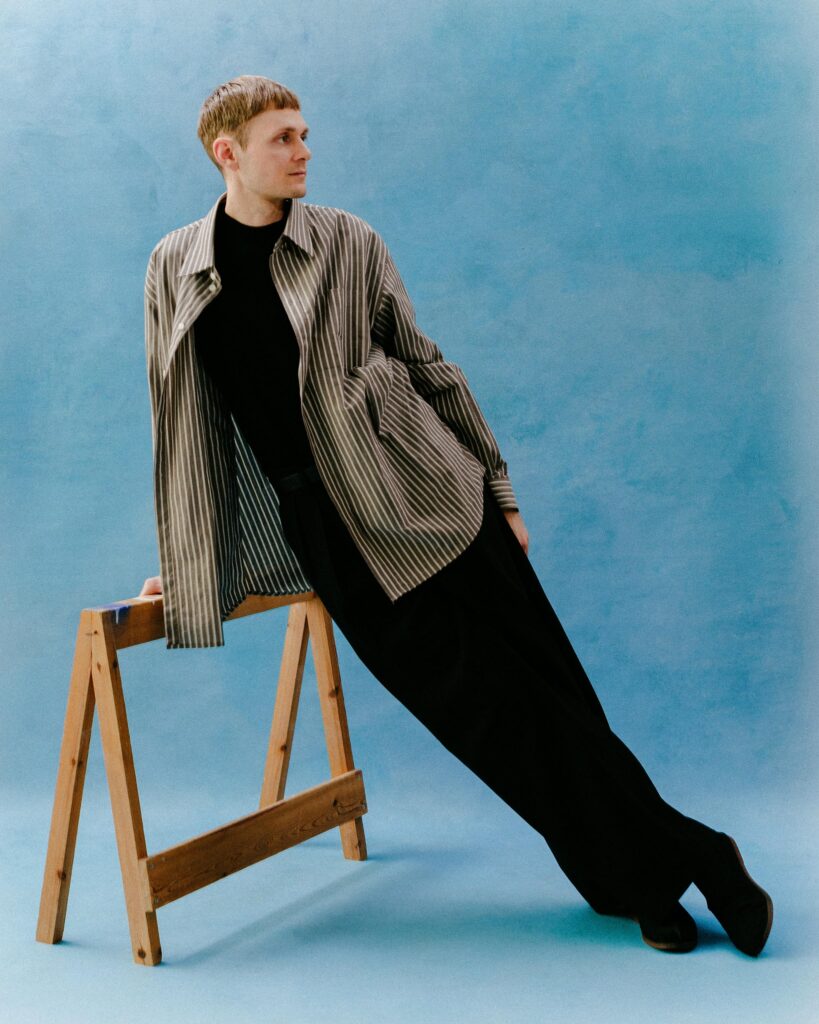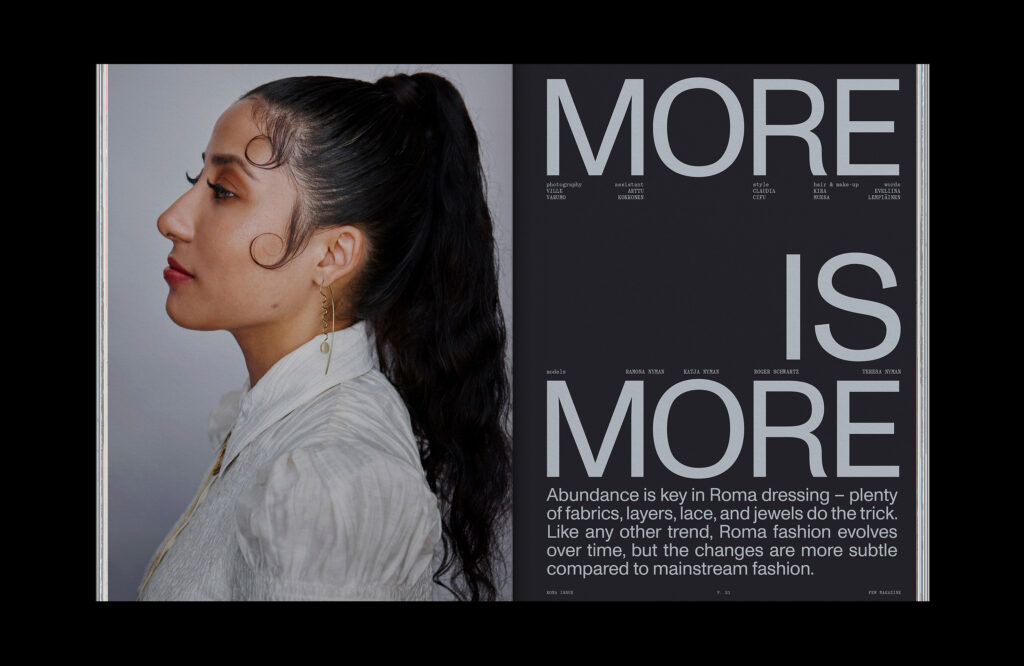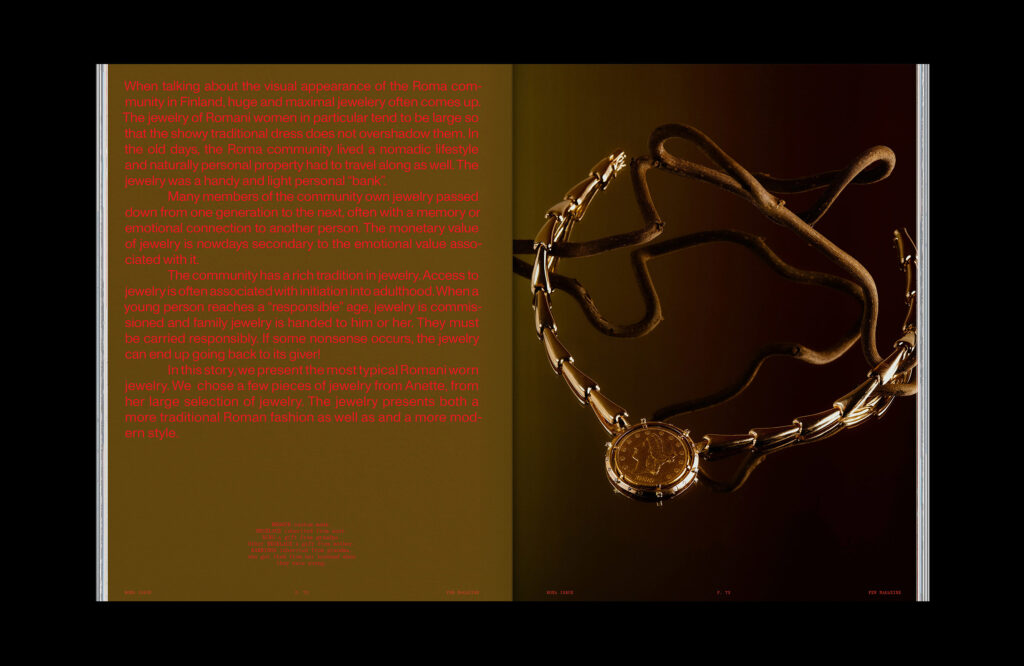
For Tino Nyman, working creatively is a balancing act
Tino Nyman is a Helsinki-based designer who specialises in art direction. His body of work moves freely between the commercial and the cultural. His brainchild, FEW Magazine, is a publication that both pleases the aesthetes while challenging the current media climate on who gets to be seen and heard in the mainstream press. Some might recognise Tino Nyman as the graphic designer who recently hosted a gentle takeover on the Helsinki Design Week (@helsinkidesignweek) Instagram page, giving plenty of insight into the quotidien of working with design.
“I am originally from Joensuu and have later settled into Helsinki after my years in Lahti,” Tino explains smiling, “however, the Eastern Finnish dialect is still very much present in the way I speak.”
The designer studied in Lahti School of Design, or LAB Institute of Design and Fine Arts, graduating with a Bachelor’s degree in 2016.
“Although I was already working at Helsinki-based consultancy BOND by the time I graduated.”

What took Nyman to the agency was an apprenticeship – but also the lucrative offer of a decent pay.
“I applied for the apprenticeship program through a friend’s recommendation, and in the end, ended up staying for 18-months until my friends Marina Veziko and Tytti Halonen lured me into working for Werklig, a creative agency based in Helsinki.”
According to Nyman, work in creative agencies was fun, and money was always OK but at some point a feeling of unfulfillment started rising. “While the agencies always supported my own, non-commercial projects, I felt that I was not really developing as a designer in the way that I had hoped.”
“Or maybe I was just approaching my thirties, going through a personal crisis,” he laughs.
Yet when Veziko also admitted to having thoughts of leaving to start something of their own, Nyman followed. “We started working from the same studio with stylist Piia Emilia, photographers Aava Eronen and Aleksi Tikkala, slowly developing our own practice.”

Even though jumping into full-freelance work was new, Nyman had been working with projects such as Rivo Magazine–a print publication focused on art and ethical porn–since his studies.
“And let’s be honest, I had been feeling passionate about print and publication for years, thinking that I should start something of my own.”
Very similarly to the recently interviewed Sälä Magazine founders, even Nyman was faced with the common dilemma of a new designer entering the industry: whether to choose money and resources for, in turn, a less interesting portfolio and CV.
“Although, I feel that in the beginning of my career, I might also have been quite naive in thinking that building a lucrative portfolio was more interesting than working with something that came with an air of commercialism. I was very interested in working with smaller, fun projects that often involved working with cultural aspects,” Nyman explains.
“Nowadays, having worked as a freelancer since 2019, I am more appreciative of bigger clients, projects and resources associated with purely commercial projects. In fact, what I really enjoy is a balance between the artistic and the more profit-oriented. I am not as interested in only working with art projects that offer very little pay, but am happier working with a good mix of the two.”
And this is where the crux lies, according to Nyman, because what is considered “commercial” is also relative.
“If the larger advertisement agencies would have a look at some of my so-called ‘commercial’ clients, I think they would hardly agree that most of those are very money driven,” Nyman laughs.
The designer has lately been working increasingly with clients from China–and the explanation is simple, Nyman’s partner is the owner behind Yatofu Creatives, an interior architecture agency based between Helsinki and Shanghai that also works with branding. Their work is on show in the Kalevala flagship store and the vibrant El Fant café space in Helsinki.
In Finland, Nyman and Yihan Xiang have worked together on the TeeMaa Tea Shop and in China with ILO-Living and InDetail brands and the companies’ interior spaces.

“In order to succeed, we have created a concept where with Yatofu, we work as a team on the groundwork together, building the brand concept and the concept of the visual tonality. After that, I continue with the brand work while they keep on going with the interior and the spatial solutions. We trust that everyone is a professional in their own field so there is no need for micromanaging. Additionally, we make sure that work stays outside of the home we share together,” Nyman explains.
Regardless of the project, Nyman is adamant to making the best of each one, stating, “I am a perfectionist”.

The gemstone of the graphic designer’s body of work is, however, FEW Magazine.

A beautiful print publication that focuses on the different minorities, diasporas and marginalised groups living in Finland.

With each issue edited by those who identify as members of the minority group in question and a visiting Editor-In-Chief from that particular minority, freedom is given to create content that is strongly influenced by what they feel should be shown. According to original founders Veziko, again, and Nyman, FEW acts as the guide for the Finnish majority population to peek into the culture of minorities, while bringing fresh perspectives into the ongoing dialogue between the two.
Something that is seen as painstakingly important in Finland at the moment.
“We have just published our second issue that discusses the Somali diaspora in Finland,” Nyman explains.
Agreeing that money-wise, FEW has never been profitable for its founders, the magazine is an excruciatingly important actor in bringing out the voices that are too often left unheard in the mainstream media of the country.
“I come from a Romani background myself, so creating something like this that stems from both the need and gaze of the minorities was extremely important for me.”
Having now launched the second issue, the team behind FEW is focused on growing the magazine organically. It took three years from the launch of the first issue for the second to reach the shelves–and its full team that now consists also of designers Matilda Diletta and Tytti Halonen.
“When dealing with a project that comes with no resources and is based on passion but also operated on a hobby-level, we as founders and creators are often faced with the dilemma of having to first create the work that brings in the money.”
“But we are adamant to keep the work going.”
Hailing from Finnish Romani culture, Nyman is no stranger to living a life squished between two cultures. “Growing up, I was very close to my Romani side of the family.”
Even today, the designer would be reluctant to wearing certain apparel when older relatives are present and making sure he acts in a manner that is considered appropriate by the culture. “I would always make sure I address the elders very formally, as is expected in our culture. As a very lazy shaver myself, I always make sure I am freshly shaved before visiting my grandparents.”

With FEW, Nyman has wanted to dismantle, to tear apart, the way the mainstream media and culture deals with minorities in Finland. “What we are used to seeing is the overrepresentation of crimes committed, discrimination and the old portrayal of cultural habits. When it comes to us Romanis, what we see is an overload of the ancient. How we dress and particularly, how women wear their traditional clothing. But even in a more modest setting, there are trends and fashion phenomena that are incredibly interesting. People just never get to see it.”
“In the 80s my grandma wore massive glasses and beautiful shoulder pads in her traditional blouses along with the full-length velvet skirts. It goes without saying that even minorities share fashion fads and crazes very much like the rest of the society.”
Besides, according to Nyman, the Romani culture is incredibly interested and involved in anything aesthetic. While tastes do differ, many are equally interested with visual culture, fashion and interior architecture. Beauty is very much appreciated in the culture, and also, possibly the reason for Nyman finding his way into graphic design in the first place.
“I love working with FEW. Creating, designing and art directing magazines and publications is the perfect blend between working creatively, representing myself–while still getting paid.”